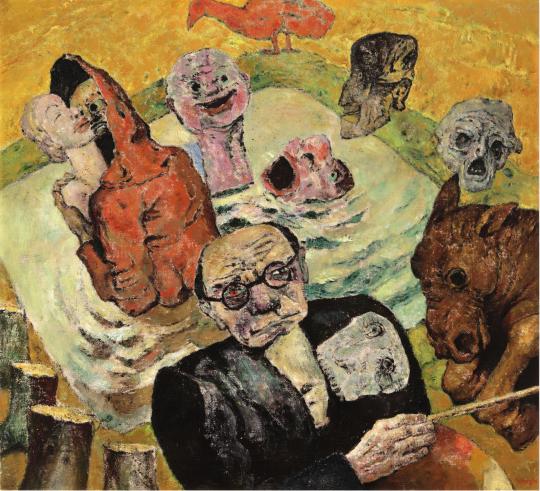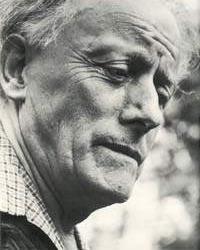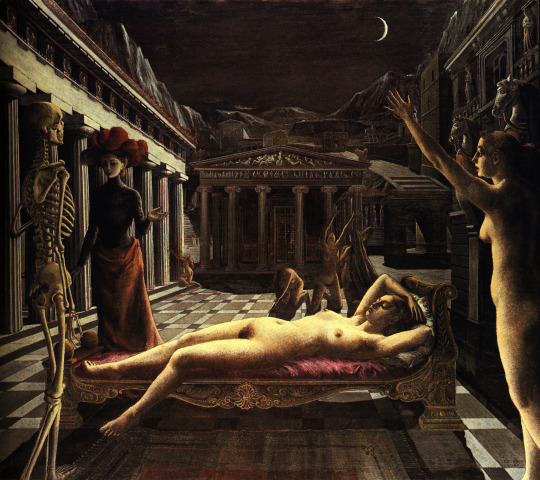#constant permeke
Explore tagged Tumblr posts
Text

Constant Permeke (Belgian, 1886-1952), Paysage [Landscape], c.1912-13. Oil on canvas laid down on board, 29.1 x 47.1 cm.
186 notes
·
View notes
Text

Constant Permeke - The Pasture
12 notes
·
View notes
Text

Winterlandschap by Constant Permeke (1912)
3 notes
·
View notes
Text

Constant Permeke
La Rousse
1944
#constant permeke#art#painting#drawing#art history#portrait#expressionism#fineart#figure#figurative painting
21 notes
·
View notes
Text

The Weeder, 1923, Constant Permeke. Belgian (1886-1952)
18 notes
·
View notes
Text
Frits van den Berghe ging van daad naar droom
Frits van den Berghe (1883-1939) werd geboren te Gent. Hoewel vandaag algemeen erkend als meester van het Vlaamse expressionisme en het surrealisme, bracht hij aanvankelijk fijngevoelige impressionistische werken, met opvallend symbolistische inslag. Op aandringen van Alfons Dessenis verhuisde hij in 1902 naar Sint-Martens-Latem. In 1906 sloot hij er vriendschap met Albert Servaes, Gustaaf De…

View On WordPress
#20-ste en 21-ste eeuws#afhankelijkheid#Albert Servaes#Alfons Dessenis#Belgisch-Vlaams#Constant Permeke#Freud#gelijkaardige stijlevolutie#groteske hallucinaties#Gustaaf de Smet#Heinrich Campendonk#Henri le Fauconnier#hoogtepunt#illustrator#Impressionisme#ineenstorting#irreëel droombeeld#Jan Sluyters#kleurengamma&039;s#kunstenaar#Latems Expressionisme#onvolkomenheid#Paul-Gustave van Hecke#psycho-analyse#socialistisch dagblad#Surrealisme#symbolistisch#tragisch#Vlaams Expressionisme#Vooruit
0 notes
Photo





Rik Slabbinck (1914 - 1991) was a Belgian painter.
Slabbinck's father ran a workshop of art embroidery for ecclesiastical vestments, flags and trims. Rik took lessons at the Bruges academy and at the Sint-Lucas in Ghent, where he decided to become a professional painter. He was briefly tutored by Constant Permeke .
12 notes
·
View notes
Text

Constant Permeke (Belgian, 1886-1952), Village Scene. Oil on canvas, 60 x 76 cm.
80 notes
·
View notes
Text

Constant Permeke - Dunes and sea
11 notes
·
View notes
Text
Even een vlieg tijdens de les muzische vorming…
Voor dit beeldend project hebben we gewerkt rond kunstenaar Constant Permeke. Met houtskool en bister maken we een hedendaagse impressie van zijn werken.
7 notes
·
View notes
Text

De renaissance van Constant Permeke: Jabbeke’s parel is opnieuw open https://www.westnieuws.be/de-renaissance-van-constant-permeke-jabbekes-parel-is-opnieuw-open/?utm_source=dlvr.it&utm_medium=tumblr
0 notes
Text

Frits van den Berghe, Portret van Constant Permeke
1 note
·
View note
Video
vimeo
6th Biennial of Painting – On Landscapes from Museum Dhondt-Dhaenens on Vimeo.
In 2018, the Biennial of Painting is at its sixth edition. The three regional museums of the Lys region are once more working together to exhibit paintings from the last 150 years. This time the Biennial will focus on the landscape, a genre with a longstanding tradition in history, and which is still today a hot topic for many contemporary artists in relation to, among other things, ecology, politics and globalization. On Landscapes
Art, modernity and the Lys region have been interconnected for more than a century and a half - from the 19th century landscape painters, the Flemish expressionists and the New Vision to contemporary creations. In MDD, the landscapes of Constant Permeke and Valerius De Saedeleer, two artists from the museum’s own collection, will serve as a starting point to link the past to the present.
Besides painting, the landscape represented through the moving image will also be covered by means of a number of contemporary films selected by curator Cis Bierinckx. The 7 selected filmworks by Doug Aitken, James Benning, Sebastián Díaz Morales, Lukas Marxt, Enrique Ramírez, Meggy Rustamova and Beatriz Santiago Muñozfor the exhibition engage with the landscape both cinematographically and thematically from a personal perspective, and with much narrative freedom.
0 notes
Text
Mini Biografías: Paul Delvaux
Nació el 23 de septiembre de 1897 en Antheit, Lieja, Bélgica. Desde 1904, asiste al colegio St. Gilles de Bruselas, donde la lectura de las célebres novelas de Julio Verne se convertirán en el centro de su pintura: dos personajes, un geólogo y un astrónomo, aparecerán con frecuencia en sus obras. Procedente de una familia de abogados, tuvo que convencer a su padre para que le permitiese acceder a la Académie Royale des Beaux-Arts de Bruselas. Tras un breve periodo dedicado a la arquitectura, se decidió a estudiar pintura decorativa, graduándose en 1924. En sus primeras obras estuvo presente la influencia de expresionistas flamencos, como Constant Permeke y Gustave de Smet, que constituían la vanguardia belga del momento. Pinta paisajes en la tradición realista de sus amigos del grupo “Le Sillon” y participa en varias exposiciones junto con Magritte, Baugniet y Flouquet. Desde 1935 militó en el surrealismo, para evolucionar en la década siguiente hacia un estilo más personal que ha sido definido como realismo mágico. Su técnica, casi académica, contrasta con su afición por los temas misteriosos y por la plasmación de un mundo onírico singular en el que la mujer se configura como un ser arcano. Delvaux trata uno de sus temas predilectos, la imposibilidad de comunicación entre los dos sexos. Y lo hace a través de una técnica depurada, sin descuidar ningún detalle, incluida la acentuada perspectiva, con el propósito, sin duda paradójico y surreal, de presentar una realidad que no tiene nada de real, pero sí de algo soñado, invisible, fantasmagórico y lleno de misterio. Participa en la Exposición Internacional del Surrealismo organizada por André Breton y Paul Éluard en la Galerie des Beaux-Arts, de París en 1938; luego, Recibe el premio de la Academia Picard y viaja por primera vez a Italia. En 1950 comienza a ejercer como profesor en la Escuela Nacional Superior de Arte y Arquitectura “La Cambre” de Bruselas, donde impartirá clases hasta 1962. La obra de Delvaux destaca por su unidad estilística. El realismo verista de sus obras nos remonta a un mundo onírico, con seres tan aislados y ensimismados, que parecen sonámbulos. Son figuras cuyos ojos no comunican nada, que parecen mirarse a sí mismas y que se sitúan generalmente en escenarios nocturnos.
Paul Delvaux falleció el 20 de julio de 1994, en Furnes.


0 notes

